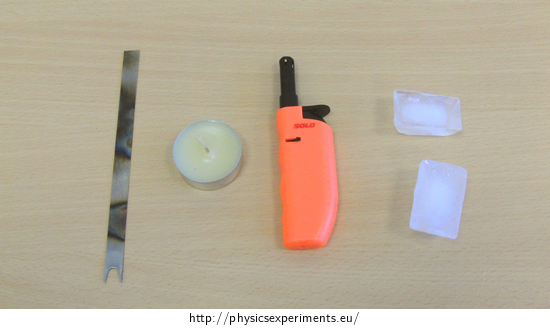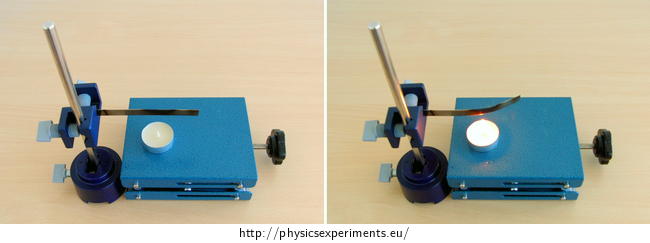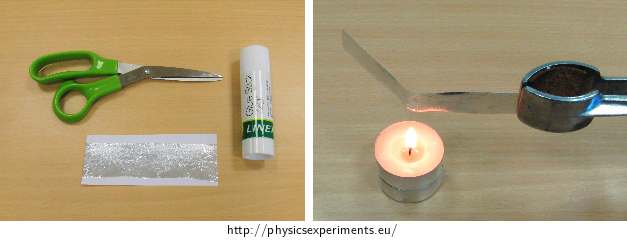Bimetal
Experiment number : 2124
Goal of experiment
The goal of this experiment is to show the behaviour of bimetal strip during temperature changes.
Theory
Thermal expansion
Thermal expansion is a property of most substances. As temperature rises, the dimensions of most materials increase and vice versa. This feature is used in bimetal.
Bimetal
Bimetals are made of two different metals that are firmly joined together. These metals must have different thermal expansion coefficients. When the bimetal is in the shape of a strip, it will bend with changing temperature.
At a certain temperature at which the two metals were joined, they are of the same length and the bimetal is straight.
With increasing temperature, the dimensions of the two metals increase by a different value, resulting in bending. When the temperature decreases to the initial temperature, the bimetal again becomes straight.
If the bimetal is cooled, both metal stripes lengths will decrease by a different value, and the bimetal will bend towards the opposite side than when it is heated.
Bimetal applications
Bimetal is used, for example, as a thermometer, an electromechanical thermostat (for example in irons or infrared heaters), or is a part of electrical circuit breaker.
To calculate the lengths of the metal strips depending on the temperature, see Bimetal.
Tools
bimetal
bimetal holder (after warming the bimetal is very hot and it is not advisable to hold it in your hand)
candle
lighter
ice

Procedure
Place the bimetal into the holder.
Put the candle about 2-3 cm below the bimetal.
Light the candle and watch the bimetal bend.
After a while, put the candle away and watch the bimetal straighten.
After the bimetal strip is straight, cool it with two ice cubes.
Observe that bimetal bends now to the opposite side than when heated.

Observed result
When heated, the bimetal stripe bends.
When we take away the heat source, the temperature of bimetal begins to decrease and it gradually straightens.
When the bimetal is cooled by the ice, it bends to the opposite side than when it is heated.
Pedagogical notes
We can make a bimetal strip at home. We need scissors, glue, a piece of paper and a piece of aluminium foil of the same size.
We glue the paper and the aluminium foil and press together. Wait for the glue to dry and cut a rectangular strip. When we heat our “bimetal” above the candle, the aluminium strip will extend more than the strip of paper and the “bimetal” bends.









